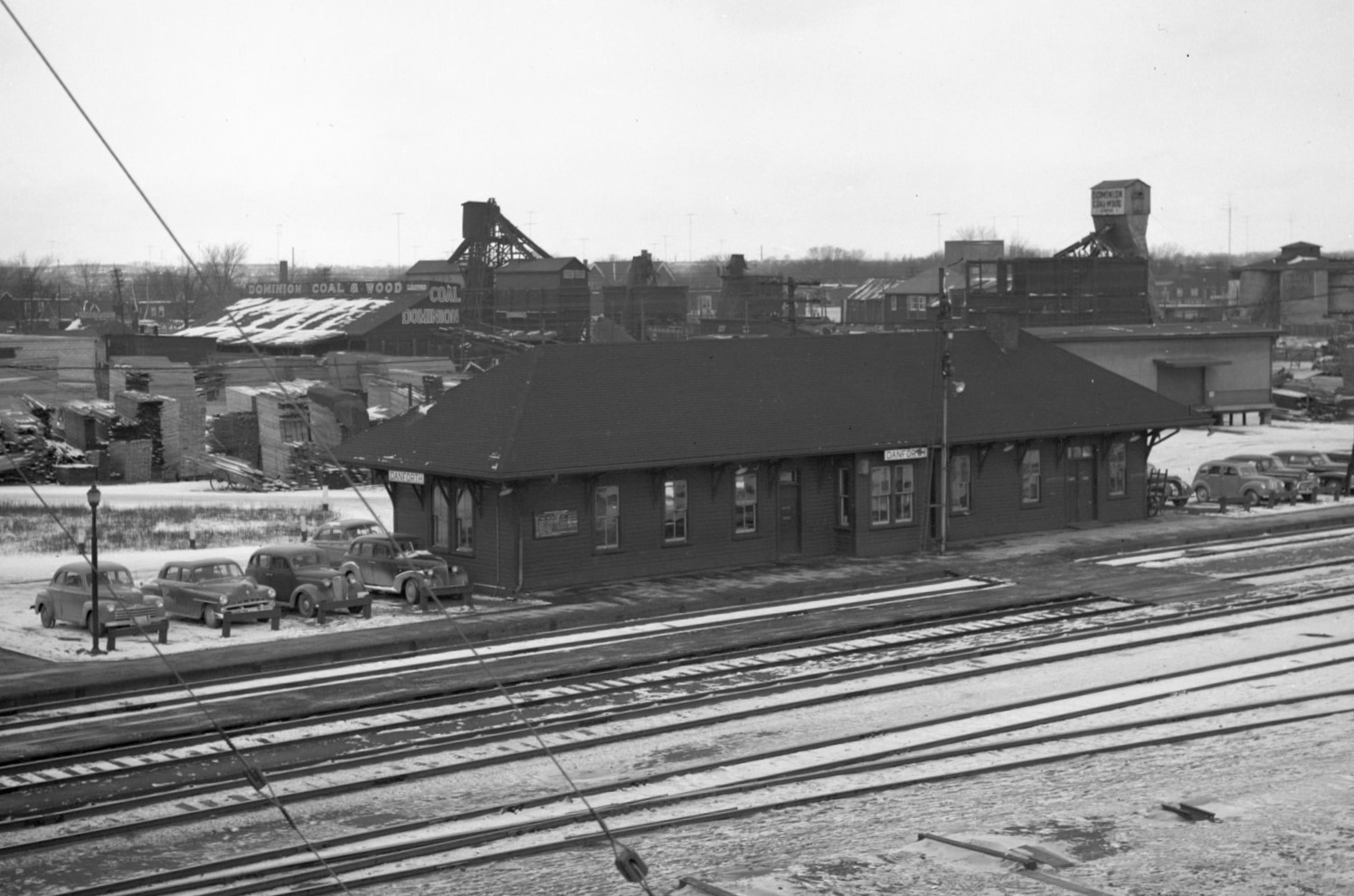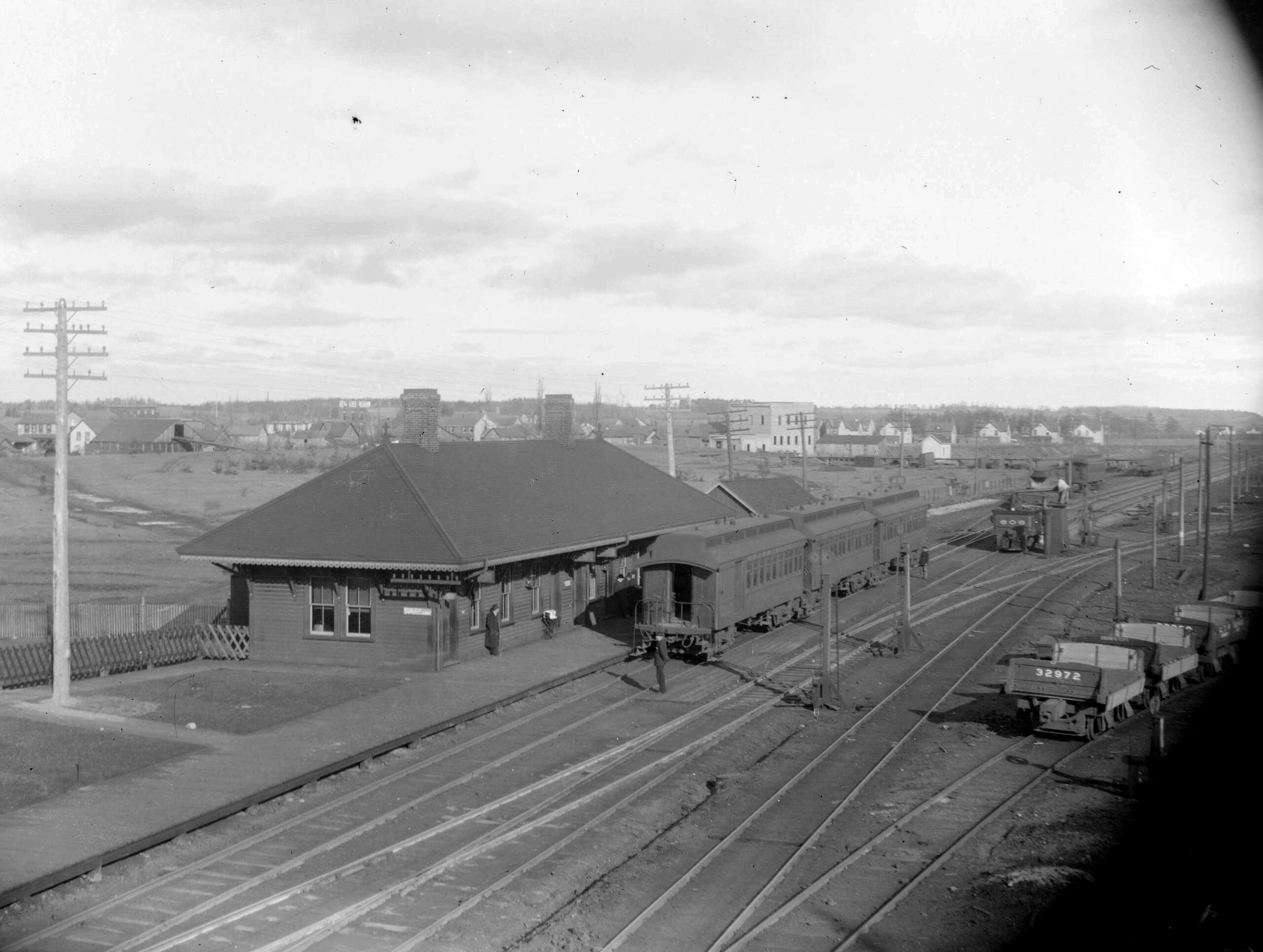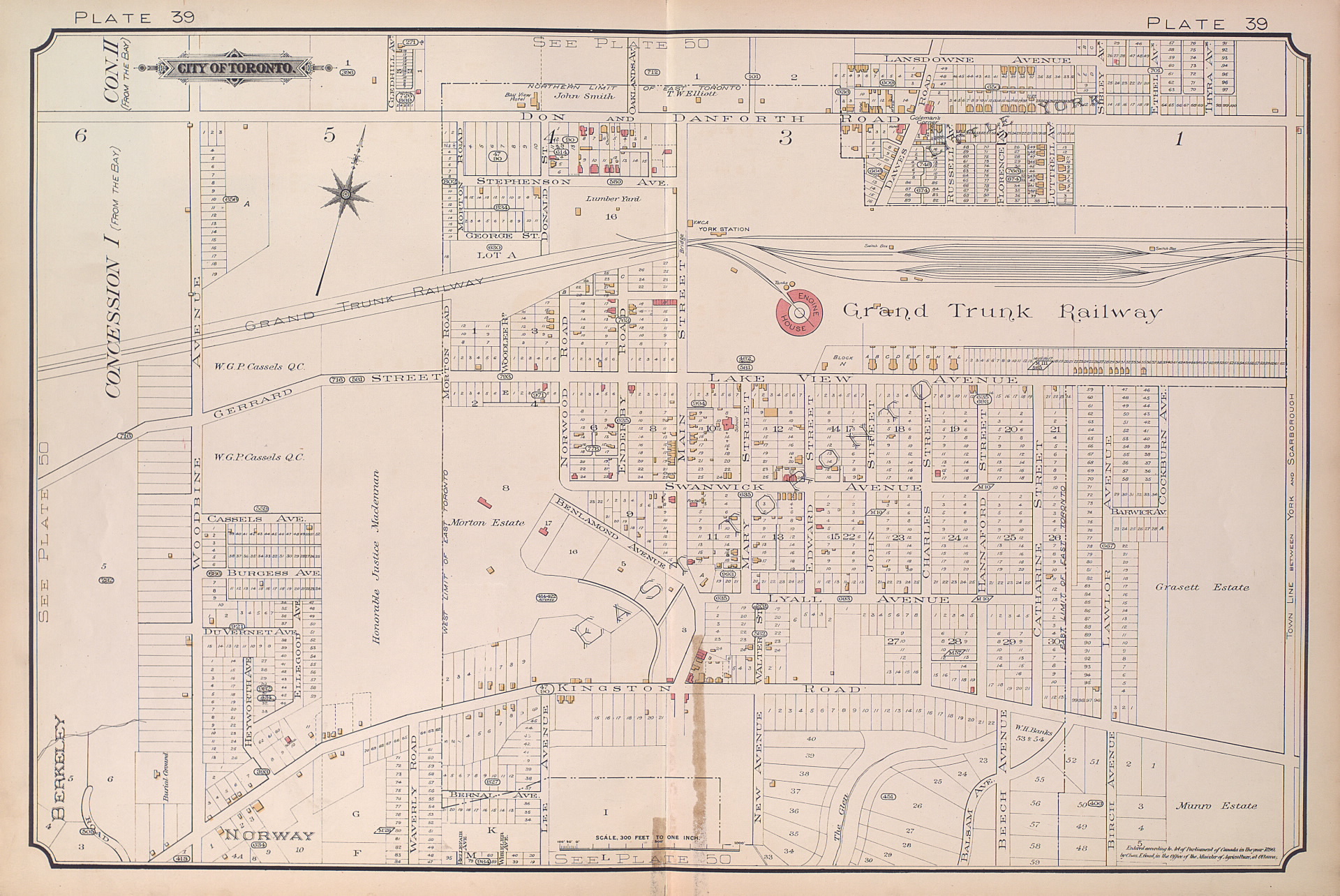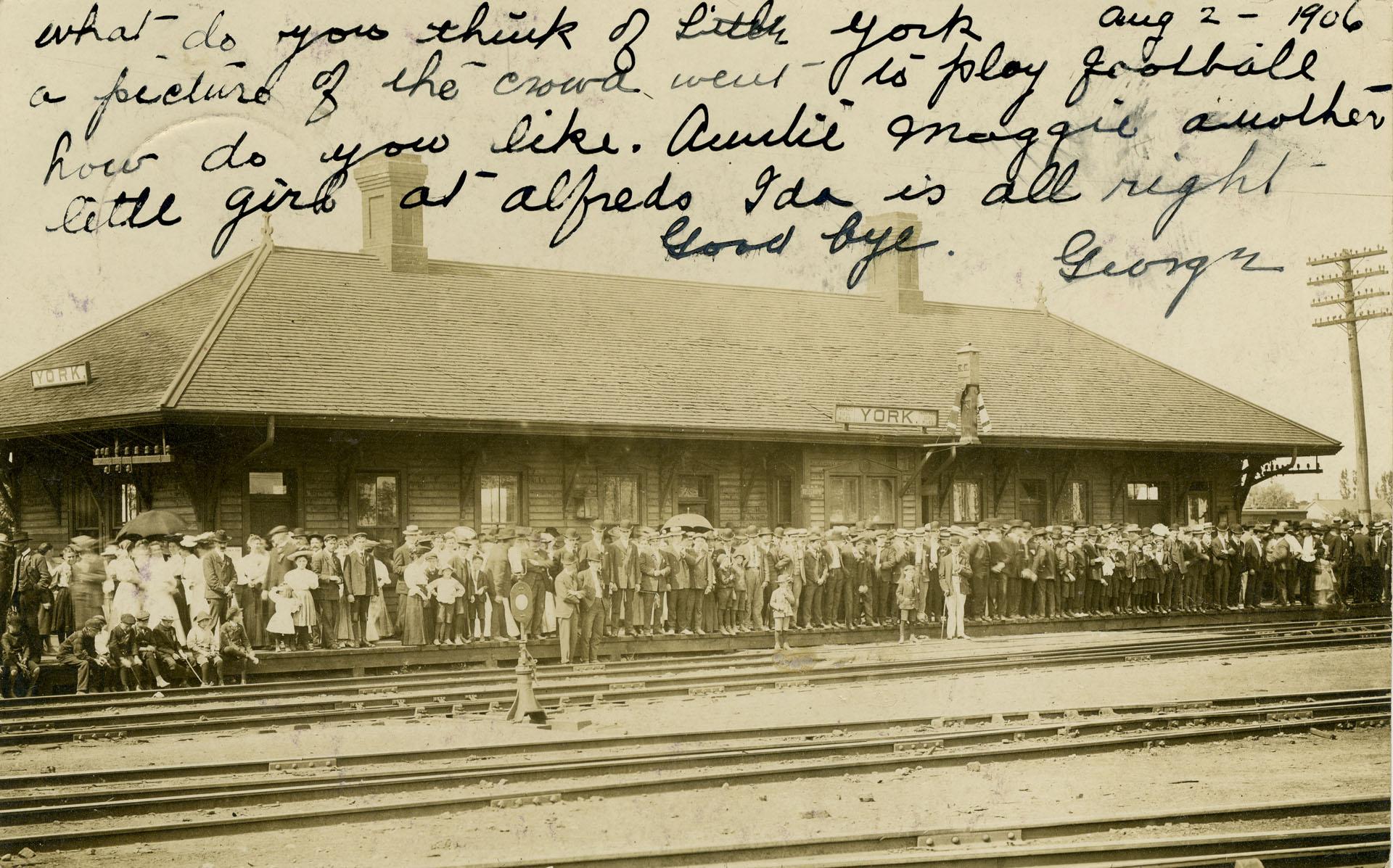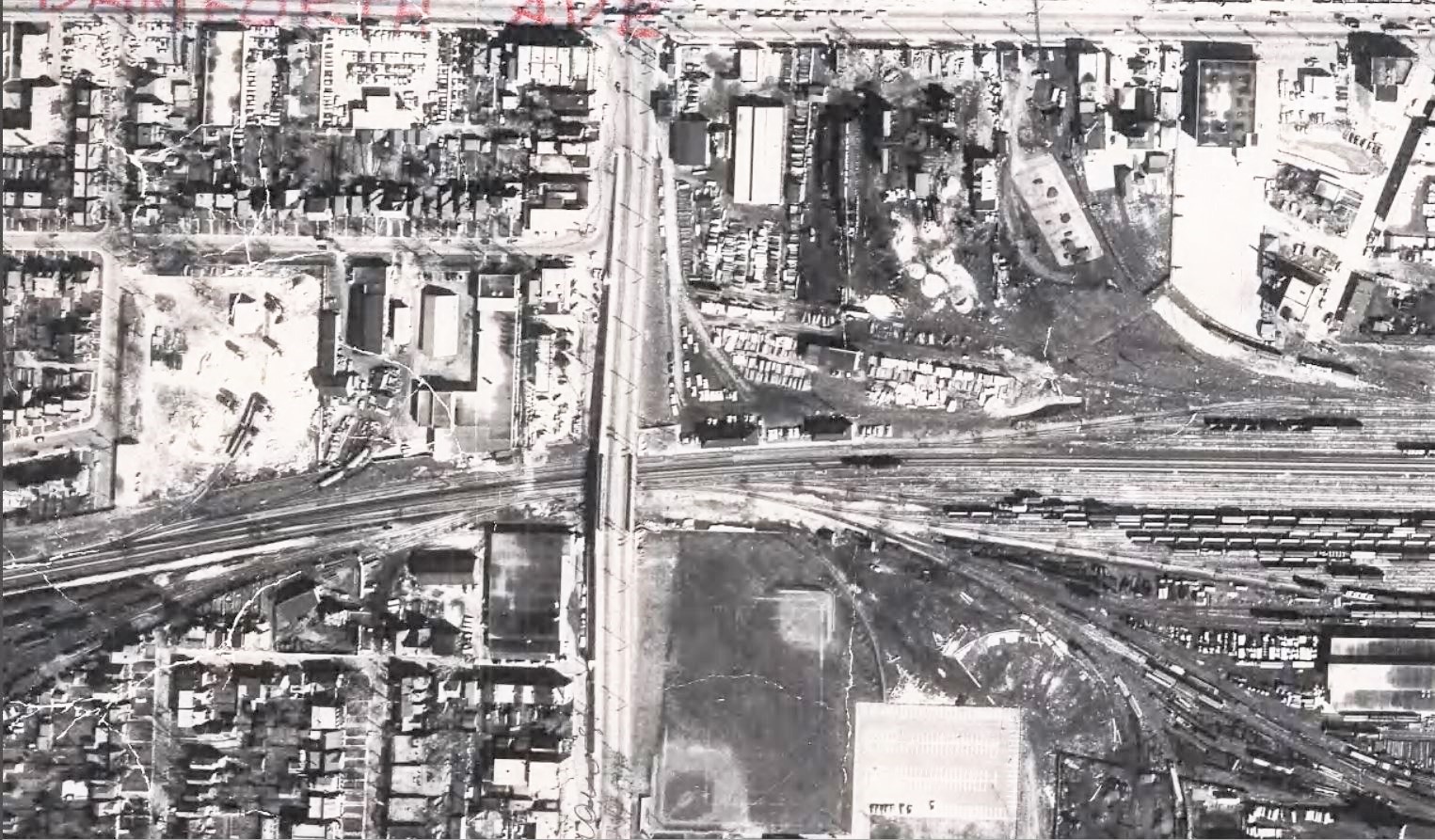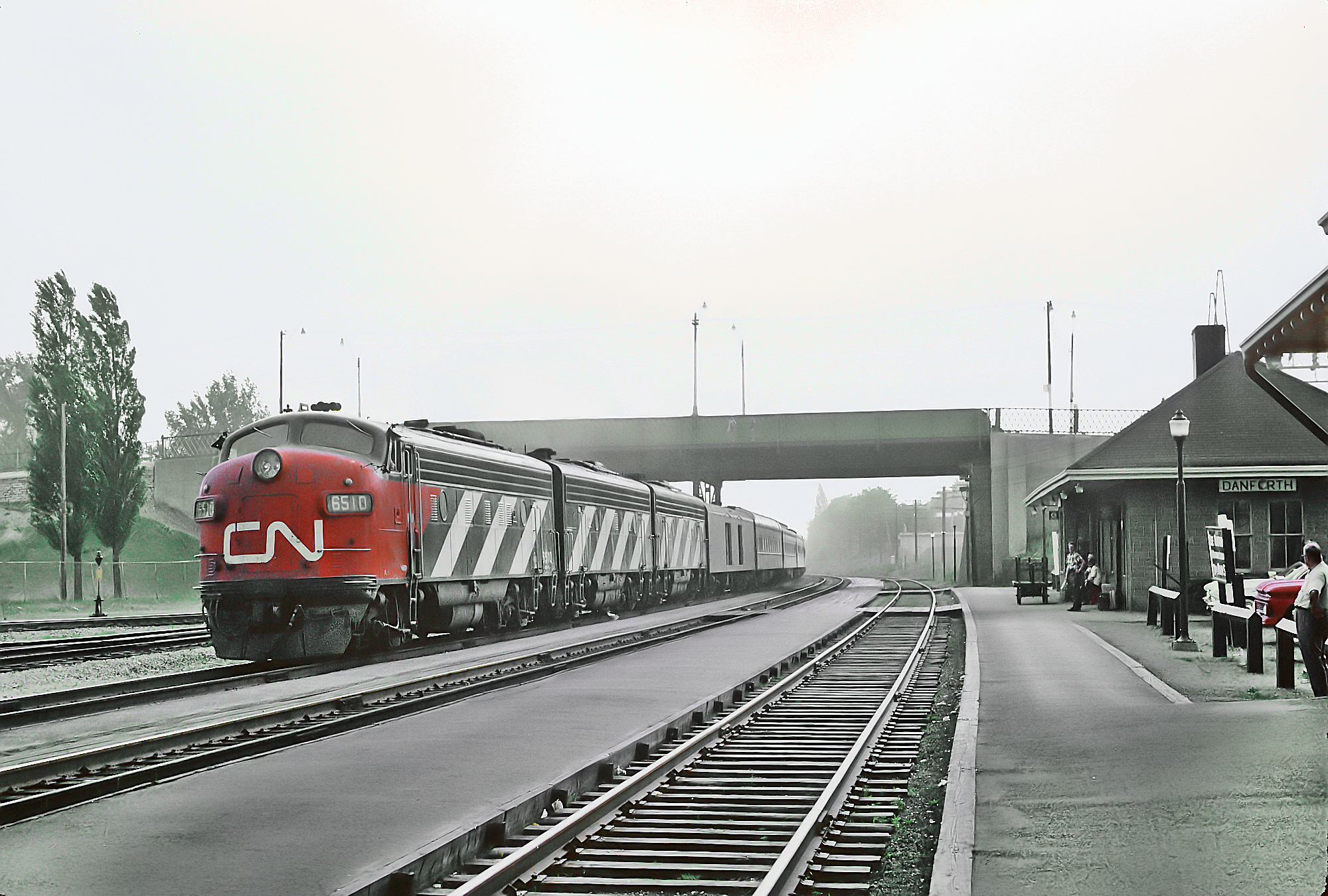Summary
At the time the Grand Trunk Railway was built through modern-day Danforth in 1856, there were only a handful of small settlements nearby. The closest was the hamlet of Coleman’s Corners at the intersection of Dawes Road and Danforth Avenue, consisting of only a post office and a couple of shops and inns. The area became known as “Little York” as the local population grew, relating it to the nearby Town of York which is what Toronto was called until 1834. Company records and timetables indicate the existence of a station or flag stop shelter at Little York when the railway first opened in October of 1856, but all mentions of it cease by 1865.
Little York’s importance would greatly increase once the Grand Trunk decided to establish a new freight yard there in the 1880’s. The yard’s 31-stall roundhouse would lead to an influx in railway employees moving to the area – many of whom previously worked at the older downtown Grand Trunk roundhouse that was replaced by the one at Little York. In anticipation of future population growth and as a convenience for railway employees living in Toronto, a passenger station called York was built opposite the freight yard and next to Main Street in 1883. A second main track was also laid between the Don River and the new freight yard the same year to facilitate the expected increase in traffic. The station building was a rectangular wood-frame building with a hipped roof, offering little else in the way of architectural embellishments. At least compared to other stations built by the Grand Trunk near Toronto during this period, its design was relatively unique. A 420-car freight sorting yard was opened opposite the station in early January 1884, including a 31-stall roundhouse with a 70-foot turntable.
On May 2nd, 1887, the Grand Trunk commenced its commuter service between Little York, Union Station, and Weston. These “suburban” trains arrived or departed Little York Station up to twelve times per day by 1890, making frequent stops at numerous locations on the way to Weston. It was reported that this particular service became fairly lucrative despite most suburban trains operating at a loss during the same period. Now at a population of approximately 5,000, Little York was amalgamated into Toronto in 1908. In 1922, just before the financially-ailing Grand Trunk was nationalized and merged into Canadian National, the station was renamed Danforth. The Danforth Roundhouse was closed and boarded up during the 1930’s, possibly due in part to the 1927 opening of Canadian National’s Spadina Roundhouse as well as economic downturn from the Great Depression. After sitting abandoned for many years it was finally torn down during or immediately after World War Two. As automobiles gained popularity throughout the early to mid 20th century, passenger ridership began to decline across the continent. At the local level, this was especially the case after the opening of Highway 401 just north of Danforth between 1947 and 1956. This highway served many of the same communities as the railway, incentivizing commuters to drive instead of taking the train. GO Transit commenced operations between Pickering and Oakville on May 23rd, 1967 to supplant the waning commuter service offered by Canadian National, and the original Danforth Station was adapted for this new service. GO continued to use the 1883 building until 1974 when it was finally demolished and a new one was built in its place.
Condensed Station Info:
| Location: | Served By: | Current State: | Date Built: | Date Demolished: |
| East side of Main Street | Grand Trunk (1883 – 1923) Canadian National (1923 – 1967) GO Transit (1967 – 1974) | Demolished | 1883 | 1974 |


